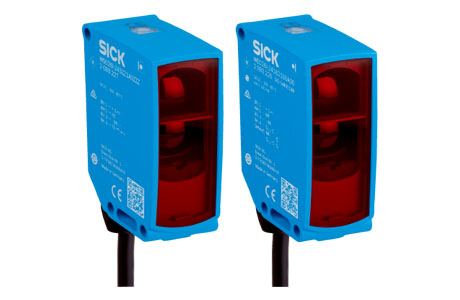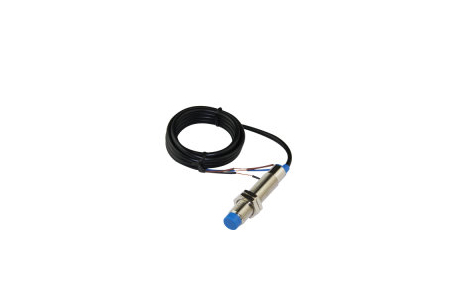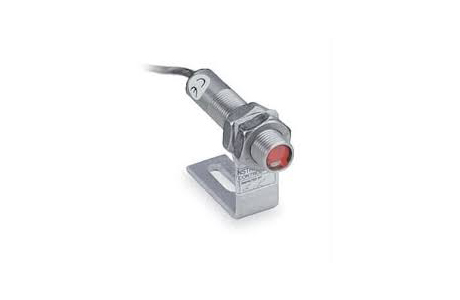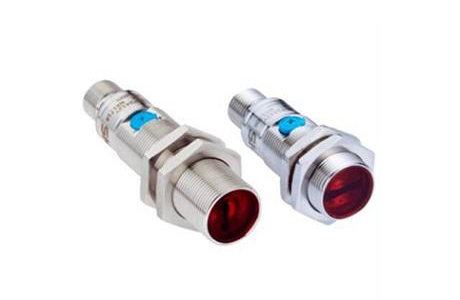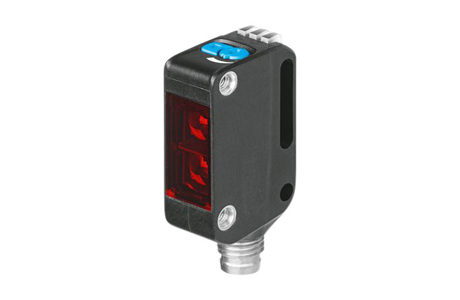Photoelectric and Optical Sensors: Working Principles and Types
Introduction
Photoelectric and optical sensors are instrumental in various industries. They enable detection, measurement, and monitoring. Sensors utilize light for interaction with the target.
Valuable information for automation, detection, and control systems. We will explore their working principles, features, and applications.
Highlighting advantages and disadvantages. Suitability in different scenarios. Enhance efficiency, safety, and accuracy. Wide range of applications.
Overview of Sensors in Industrial Automation
Sensors in Industrial Automation
Sensors are the backbone of industrial automation. They are pivotal in facilitating precision, efficiency, and safety in manufacturing processes.
The Role of Sensors
In this context, Photo Sensors and Optical Sensors are highly valued.
They detect objects and monitor production lines. They support quality control and play a crucial role in automation.
Intelligent sensors enhance industrial systems. They are indispensable in technology-driven industries. These sensors are integral to monitoring production lines.
They support quality control, ensuring high standards. Their role is crucial in automating processes.
Different Types of Sensors
Photoelectric Sensors
Photoelectric sensors are optical sensors. They utilize light in their functioning. They play a critical role in industrial automation, ensuring precise object detection.
Categories of Photoelectric Sensors
These sensors come in various forms, each suited to different applications. The three main types are through-beam sensors, retro-reflective sensors, and diffuse reflective sensors.
These categories mainly differ in their emitter-receiver arrangements, thereby offering diverse sensing capabilities.
1. Through Beam Photoelectric Sensor
A Through beam photoelectric sensor has two units. The units are an emitter and a receiver.
An object disrupts the direct light beam. The disruption activates the sensor. It’s perfect for applications demanding high precision and range.
2. Diffuse Reflective Photoelectric Sensor
The diffuse reflective sensor integrates emitter and receiver. Both are in one unit.
The sensor detects reflected light. It identifies objects of varying shapes and sizes. It functions based on this detection.
3. Retro-Reflective Photoelectric Sensor
Lastly, the retro-reflective photoelectric sensor also has the emitter and receiver housed together.
The sensor uses a special reflector. It detects objects interrupting the reflected light beam.
This feature renders it useful in environments requiring flexible object detection.
Optical Sensors
Optical sensors are crucial components. They measure the properties of light. They convert them into electrical signals. They have wide applications. They vary based on design, the principle of operation, and use.
Point Sensor and Distributed Sensor:
Point sensors operate on a single point. Distributed sensors work over a distribution of points. They use a sensor array or optical fiber.
Distributed sensors work over a distribution of points. They use a sensor array or optical fiber.
They offer continuous monitoring and measurements along a larger area or length. Point sensors offer accuracy and localized information. Distributed sensors provide a comprehensive overview over a larger area.
Extrinsic and Intrinsic Sensors:
Extrinsic sensors detect changes outside the fiber. Intrinsic sensors detect changes within the fiber.
The beauty of optical sensors lies in their versatility. With a plethora of types and designs, they cater to a broad spectrum of needs in the automation industry.
The choice between extrinsic and intrinsic sensors depends on the specific application requirements. Extrinsic sensors are suitable for external target parameters. Intrinsic sensors excel in measurements within the fiber optic medium.
Working Principles
A. Photoelectric sensor working principle
The photoelectric sensor has two main components. The components are a light emitter and a light receiver. The light emitter, typically an LED or laser diode, emits a focused beam of light towards the target area.
The light receiver is positioned opposite the emitter. It detects the amount of reflected light. Photodiode or phototransistor is commonly used as the receiver.
No object in sensing area: high intensity of received light.
Object enters sensing area: obstructs light beam, decreases intensity of received light. Receiver detects decrease and generates proportional electrical signal.
Photoelectric sensors can be further classified into two types: through-beam and reflective. In Through-beam sensors: emitter and receiver face each other, object passes between them. Reflective sensors: emitter and receiver in the same unit, object reflects light back.
These sensors find applications in various industries, including manufacturing, packaging, automation, and robotics. Widely used for object detection, presence sensing, counting, and position tracking. Non-contact nature and high reliability. Ability to detect a wide range of materials. Popular in industrial settings.
B. Optical sensor working principle
An optical sensor operates based on the interaction of light with the target object. Optical sensor utilizes optical properties. It detects and measures parameters. Properties include reflection, absorption, or transmission of light.
Optical sensor illuminates the target with light. It analyzes resulting optical signals. Used for measurement or detection purposes. Widely used in distance measurement, Used for color sensing. Applied in gesture recognition.
Optical sensors utilize various techniques to capture and interpret optical signals.
Photodetection detects changes in light intensity or wavelength. Scattering analyzes scattering patterns of light for object information.
Optical sensors can also rely on refraction or reflection of light. Refraction changes light direction through a medium. Reflection bounces light off object surface. Sensor measures angles or intensities of refracted or reflected light. Data collected about object’s properties.
Optical sensor design includes lenses, filters, or waveguides. They manipulate light for specific purposes. Found in biomedical devices, environmental monitoring, industrial automation, and security systems.
Conditions for Photoelectric Effect
The photoelectric effect occurs under specific conditions. Conditions involve the interaction of light with matter. Frequency, intensity, and material nature are key factors.
Incident light frequency must match or exceed threshold frequency. Provides enough energy for electron ejection from the material’s surface.
Secondly, the intensity of the incident light affects the number of electrons ejected. Higher light intensity results in a greater number of ejected electrons.
Lastly, the nature of the material is crucial. Lower work-function materials are more susceptible to the photoelectric effect. More loosely bound electrons increase susceptibility to the effect.
Understanding conditions explain the photoelectric effect. The photoelectric effect has applications in solar cells and photodetectors.
Features of Sensor
Emitter-Receiver Sensor:
Emitter-receiver sensors have separate units. They are also called through-beam sensors.
The emitter unit emits a focused light beam. The receiver unit detects a light beam after passing through the sensing area.
Sensors offer longer sensing distances. Suitable for applications requiring precise detection.
Reflective Sensor:
Reflective sensors combine the emitter and receiver in a single unit. A unit may have a built-in reflector or target object.
The emitted light beam reflects off a reflector or target object. Detected by the receiver within the same unit.
Sensors offer ease of installation. Commonly used for proximity sensing. Detect objects in close range.
Applications of Photoelectric Sensor
Sensors Used in Industrial Automation:
Sensors play a crucial role in industrial automation. They enable accurate monitoring and control. Sensors are essential for various processes.
They are used for position sensing, object detection, level sensing, and quality control. Examples include proximity sensors, photoelectric sensors, pressure sensors, and temperature sensors.
Sensors enhance efficiency. They improve safety. Sensors enable smooth operation of industrial machinery.
Detection Sensors:
Detection sensors detect presence, absence, or specific characteristics of objects. Used in security systems, automotive collision avoidance, intrusion detection, environmental monitoring, and more.
Types include motion sensors, proximity sensors, gas sensors, and vibration sensors. Enable accurate and reliable detection for diverse purposes.
Automation Sensors:
Automation sensors are fundamental components. They enable machines and processes to operate autonomously.
Sensors facilitate motion control. They aid in positioning. Sensors provide feedback control. They assist in process monitoring.
Examples include encoders, pressure sensors, force sensors, and temperature sensors. Automation sensors enhance productivity, reduce errors, and improve overall system efficiency.
Advantages and Disadvantages
Advantages of photoelectric sensor
Non-contact detection:
Photoelectric sensors operate without physical contact. They minimize the risk of damage or wear. Applies to both the sensor and the object.
Versatility:
Sensors can detect a wide range of objects. Objects include transparent, opaque, reflective, and fast-moving objects. Suitable for diverse applications.
High accuracy and reliability:
Photoelectric sensors provide precise detection. They offer reliable performance. Suitable for demanding industrial environments.
Fast response time:
Sensors offer rapid detection and response. They enable high-speed automation processes. Sensors provide quick feedback control.
Long sensing distances:
Photoelectric sensors cover long distances. They provide installation flexibility. Enable detection in challenging or inaccessible areas.
Adjustable sensing parameters:
Photoelectric sensors offer adjustable sensing parameters. Parameters include sensitivity, detection range, and response time. Customization to specific application requirements is possible.
Immunity to environmental factors:
Photoelectric sensors are less affected by environmental factors. Factors include temperature, humidity, and noise. They ensure stable operation in diverse conditions.
Disadvantages of photoelectric sensor
Susceptibility to environmental conditions:
Photoelectric sensors may be affected by external factors. Factors include dust, smoke, fog, or bright ambient light. Potential inaccuracies or false detections can occur.
Limited detection range:
Some photoelectric sensors have long sensing distances. Others may have limitations in close or far object detection. Careful positioning is necessary.
Limited material compatibility:
Transparent or highly reflective objects can pose challenges. Photoelectric sensors may have unreliable or inconsistent detection.
Alignment and setup requirements:
Proper alignment is critical for accurate detection. It may require additional setup time and adjustments during installation.
Higher cost:
Photoelectric sensors can be relatively more expensive. Specialized models or longer sensing distances increase cost.
Maintenance and cleaning:
Photoelectric sensors may require periodic cleaning. Cleaning is necessary for optimal performance. Important in environments with high dust, dirt, or contaminants.
Advantages of Optical sensor
High precision:
Optical sensors provide precise measurements. They capture detailed optical signals. Enable fine resolution and high sensitivity.
Wide range of applications:
Optical sensors have various applications. Used in medical devices, environmental monitoring, manufacturing, robotics, and communication systems.
Non-contact operation:
Optical sensors operate without physical contact. They reduce the risk of damage or interference.
Fast response time:
Optical sensors have rapid response times. Suitable for high-speed applications. Ideal for real-time monitoring or control.
Versatile detection capabilities:
Optical sensors detect and measure various parameters. Parameters include distance, position, color, shape, refractive index, and motion. Enable diverse sensing capabilities.
Low power consumption:
Optical sensors are designed to be energy-efficient. They consume minimal power. Reliable performance is maintained.
Compact and lightweight:
Optical sensors have compact designs. They have low-profile structures. Easy integration into space-constrained devices or systems.
Disadvantages of Optical sensor
Limited in certain environments:
Optical sensors can be susceptible to ambient light. Dust, fog, or obscuring objects can affect their performance. They may experience accuracy issues.
Sensitive to alignment:
Proper alignment is crucial for reliable measurements. Careful setup and positioning are necessary.
Limited penetration:
Optical sensors struggle with detecting inaccessible objects. Difficulty with opaque or deeply embedded objects.
Material compatibility:
Optical sensors have limitations in detecting certain materials. Challenges with transparent, reflective, or complex optical properties.
Higher cost:
Optical sensors can be relatively more expensive. Cost increases for advanced models or specialized applications.
Maintenance and cleaning:
Optical sensors may require periodic cleaning. Cleaning is needed to remove contaminants. Adds to maintenance efforts.
Conclusion:
Photoelectric and optical sensors are vital in industries. They have important roles in applications. Photoelectric sensors excel in detecting objects. They use light beam interruption or reflection. Non-contact sensing and high reliability.
Optical sensors utilize light-object interaction. They provide precise measurements. Diverse detection capabilities. They find application in fields such as automation, detection, and environmental monitoring.
Photoelectric sensors offer non-contact detection and versatility. They can be affected by environmental conditions. They have limitations in material compatibility.
Optical sensors have high precision and wide applications. They can be sensitive to alignment. They may have limited penetration capabilities.
Understanding features help select suitable sensor types. Empowers decision-makers. Photoelectric and optical sensors improve efficiency, accuracy, and productivity. Applicable in industrial automation, object detection, and process control. Important in various industries.

